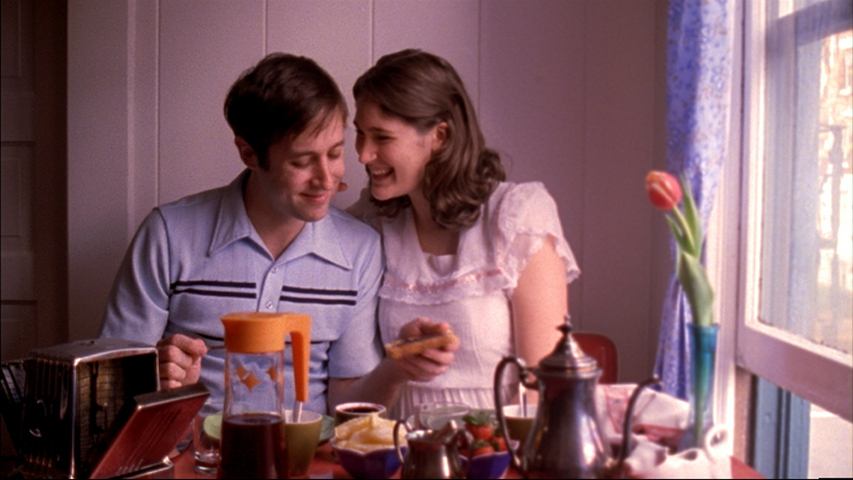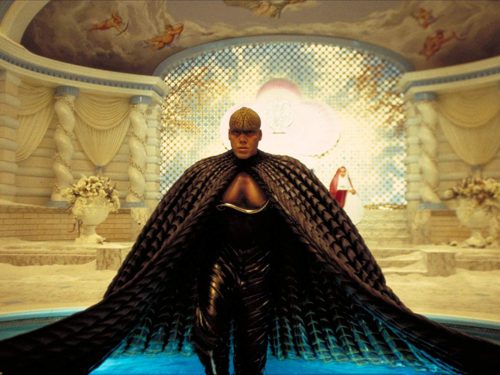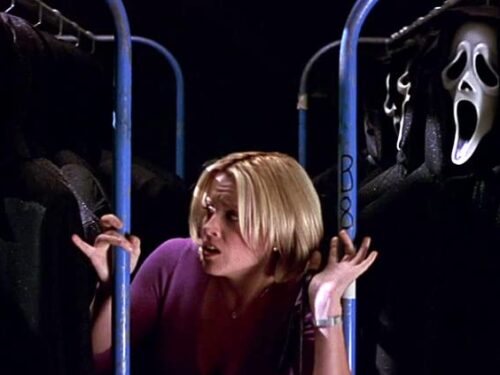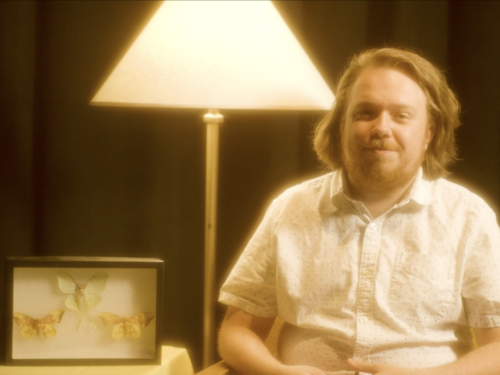Peterson’s 2006 musical is one of the most delightful and perceptive independent films of the 2000s
I was first introduced to Nick Peterson’s work through his short films, many of which are nearly silent. Ranging from sparse, mostly wordless dramas and comedies about communicatively challenged individuals (2004’s Contingent and 2003’s Three) to landscape films inspired and scored by classical music (the “Webern Tests” of 2004), his short work takes a variety of forms and tones. When I arrived at Yellow (2006), his first feature film, I was pleasantly surprised when it turned out to be a musical — not just a film with scored interludes or musical elements, but a true-blue musical fashioned in the style of pre-Code Ernst Lubitsch productions like The Smiling Lieutenant (1931) and One Hour with You (1932). Peterson’s earlier films are all musical in their own unique ways, but Yellow wears its adoration for the musical genre proudly on its sleeve, and it does so without dressing itself up like a throwback. Yellow wisely skips the nostalgia by plunging right into the messy nature of (mid-2000s) modern romance.
Shot in Portland, Oregon, on Super 16mm and starring mostly non-professional actors, Yellow is built upon a simple premise: Matt, a young mailroom worker (Eric Schopmeyer), falls instantly for Natalie (Nora Ryan) upon crossing paths with her on a series of lunch breaks. He eventually follows her to the library where she works and asks her out on a date. Despite a mutual attraction, their relationship develops at an odd pace. Matt is a daydreamer. He is clearly in love with Natalie, yet he is usually a bit zoned out or out-of-synch in his interactions with her. He proves oblivious to most social cues and later forgets his own epiphany regarding their relationship. Natalie is more cynical about love. The film’s first musical number involves her friend Christian (Nico Izambard) encouraging her to be more open to romance while she doubts love’s sustainability. Throughout the film, she is weary of committing to Matt. She recognizes his sincerity, but worries she is letting passion blind her sense of reason.
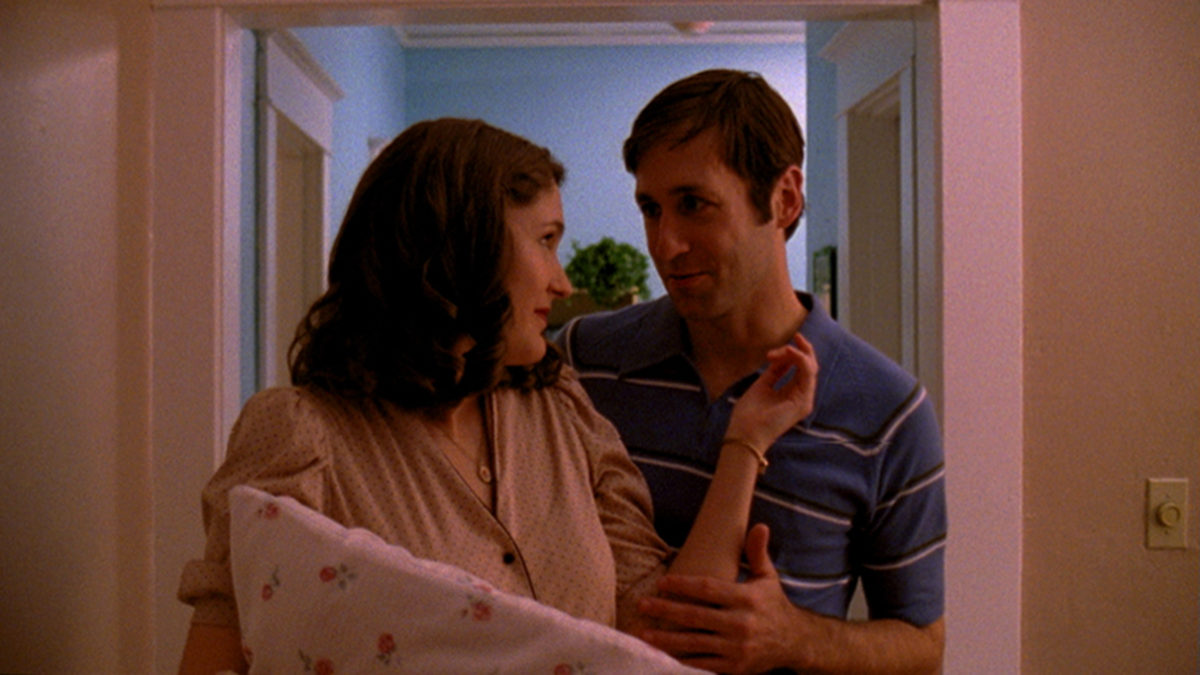
When I first watched Yellow back in 2016, I scribbled the term “non-idealized idealism” across my viewing notes. Seeing this note recently made me roll my eyes (this viewing took place the morning after an all-night writing session in grad school, so the page is filled with similarly sleep-deprived observations), but the idea isn’t entirely wrong. The environments that Peterson creates within Yellow encourage the musical moments; the natural push within the narrative tends toward a collective rhythm building throughout each scene. As one character starts to sing, the song will build not just with other primary characters joining with their voices or an instrument, but with unrelated background figures clicking buttons on office copy machines or punching a stapler on-beat. The characters who fight against the songs, as one of Matt’s coworkers does, are the ones presented as out-of-step with the film.
And while Yellow creates these fantastic musical moments, the songs are all amateurish in the most joyous of ways. The actors’ voices are far from Movie Musical Perfect; La La Land this is not, and thank God for that! The looseness of the vocal performances and arrangements make Yellow endearing in ways that slick major studio song-and-dance productions rarely achieve. Yellow is even more impressive for the fact that its score (composed by lead actor Schopmeyer) was recorded live on-set to accompany the action. A now out-of-print DVD of the film features on-set photographs of the production, with a full band stationed behind the camera, backing the actors as they sing in cramped apartments and public parks.
In most traditional musicals, the songs create opportunities for characters to communicate their deepest feelings through their singing and dancing with relative ease and clarity. The numbers often take place in an undefined space beyond the narrative. Yellow lets the confusion, self-doubt, and inarticulateness of its characters follow them into their songs. For instance, Matt begins to sing about the beauty of Natalie’s eyes while at work, before pausing to realize he doesn’t actually know what color they are. In the duet “Let’s Be Prude,” Matt and Natalie trade lines about the benefits of not having sex on their first date, while both of them are visibly not entirely sold on the merits of what they are singing. Yellow is able to explore more complicated truths by inviting the characters’ efforts to understand their feelings and articulate themselves into the mix. The film obviously earns the comparisons to the Lubitsch musicals mentioned above, yet connections should also be drawn between Yellow and the work of Peterson’s contemporaries, such as Andrew Bujalski, Mike Gibisser, and Frank V. Ross. Films like Mutual Appreciation (2005), Finally, Lillian and Dan (2006), and Audrey the Trainwreck (2010) concern young characters trying to connect with potential lovers, exploring the most delicate aspects of their struggles to articulate their emotions. Yellow shares a similar interest in building its drama from characters’ hesitations, and failures, at gauging when to let down their defenses and take the risk of opening up emotionally to a companion. As Natalie struggles to balance her feelings with that deep-seeded skepticism of whether love can last, she sings of her doubts that she and Matt will work out, yet her face doesn’t appear so eager to be alone again. Matt sings of his great love for Natalie to almost anyone who will listen. But he fails to prove it in crucial moments. When he meets Natalie’s sister and friends for the first time, he has a few too many beers before being asked if he loves her. He replies with “I think so” and a shrug.
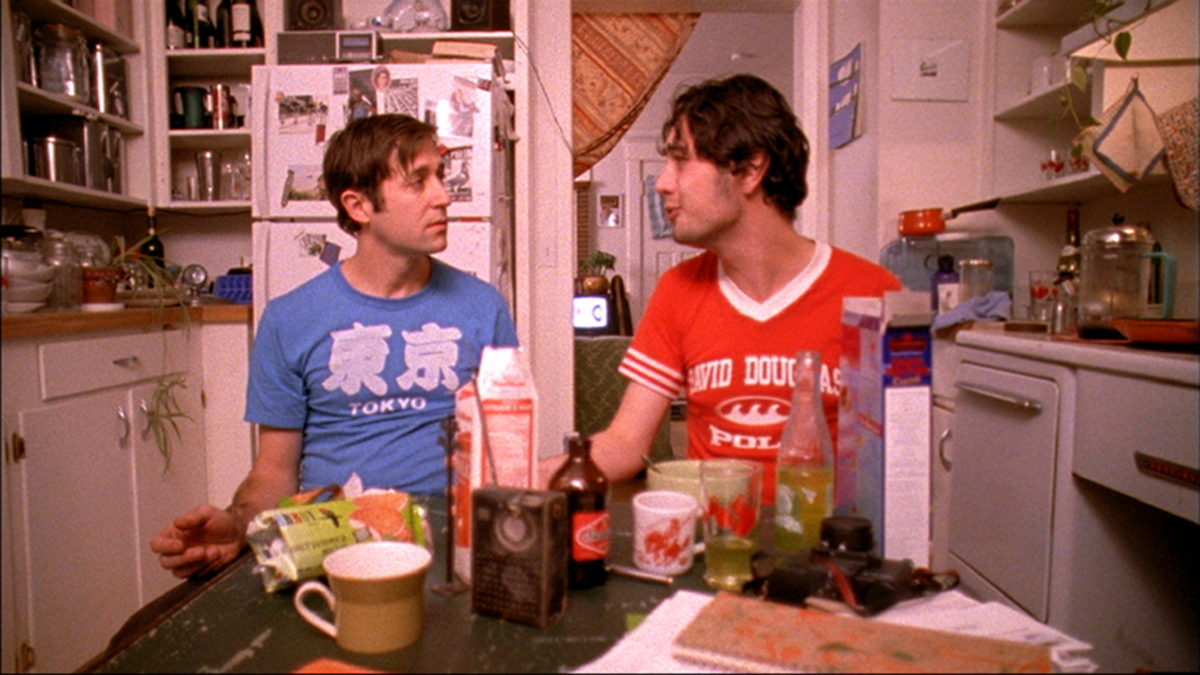
In Yellow, words, and lyrics, can be deceiving. Many of the film’s crucial moments rely heavily on silence. The simple framing of a nightgown hanging in a bedroom conveys Natalie’s desires better than the mess of polite words she and Matt spout when trying to say they want to sleep together. The final scene in the film is wordless, relying on the most subtle gestures from both the actors and Peterson’s camera to convey the emotions that Natalie and Matt find so hard to express through words.
The film itself is, on one hand, formally rigid. Peterson cites Yasujiro Ozu as an influence, and it shows in everything from his scene construction and sequencing to his framing of shots. But Yellow also manages to feel endearingly ramshackle in its presentation. This contradiction between the tightness of its sequencing and the looseness of its style is what is most miraculous about Yellow. Peterson shares a title card in the closing credits with Schopmeyer and art director and producer Mary DeFreese, and deservedly so, as the music and the vibrant colors of the sets create a humble magic within the film. I often refer to Peterson as my favorite filmmaker from Portland. But his films must be considered on a scale beyond regionality because they deserve to be discussed far more often and with great enthusiasm.
Many of Peterson’s films are available for free on his YouTube channel, including Yellow and his brilliant follow-up feature, Field Guide to November Days (2010)
Stay up to date with all things Split Tooth Media and follow Brett on Twitter and Letterboxd
(Split Tooth may earn a commission from purchases made through affiliate links on our site.)

